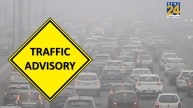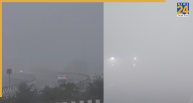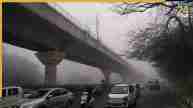As Delhi continues to battle a hazardous pollution crisis, over four crore residents of the National Capital Region (NCR) are breathing poisonous air with the average Air Quality Index (AQI) crossing 400 for four consecutive days. Adding to the concerns, the Meteorological Department’s warning predicts that the pollution levels are likely to persist for the next three days, offering little respite. Relief from this dire situation may only arrive after November 7.
#WATCH | Sprinkling of water done in Delhi’s National Zoological Park, as a measure against the rise in Air Quality Index (AQI) in the national capital (04/11) pic.twitter.com/ufyMDFV4YU
---Advertisement---— ANI (@ANI) November 5, 2023
Worsening AQI Levels
The air quality in the national capital has once again deteriorated, with Saturday recording an AQI of 415. At 4 pm on Saturday, 23 out of 34 pollution monitoring stations reported “severe” air quality. Areas like Shadipur (475) and Anand Vihar (473) experienced the worst AQI levels. This follows the AQI of 468 recorded on Friday. On Sunday, pollution levels surged even further, with the average AQI soaring to 486. In an effort to combat the situation, water was sprayed in Delhi’s National Zoological Park on Sunday morning.
#WATCH | Thick layer of haze engulfs Delhi as Air Quality continues to be in the ‘Severe’ category
(Visuals from Lodhi Road, shot at 6:32 am) pic.twitter.com/zg1NTy1kPp
— ANI (@ANI) November 5, 2023
Predicted Continuation of Poor Air Quality
Kuldeep Srivastava from the India Meteorological Department (IMD) explained that the situation is unlikely to change over the next three days due to calm winds, which are facilitating the accumulation of pollutants. Although a western disturbance is expected on November 7, it is not anticipated to significantly impact the plains, indicating that substantial improvements may not be imminent.
Delhi Environment Minister’s Plea
In response to this alarming pollution crisis, Delhi’s Environment Minister, Gopal Rai, has expressed deep concern about the city’s future. He has written to the Central government, urging them to ban the entry of polluting vehicles into the NCR region and requesting a meeting with the environment ministers of the neighbouring states. Rai’s plea underscores the gravity of the situation and the need for coordinated efforts to combat air pollution.
Stubble Burning Contributing to Pollution
Experts have pointed out that the rising pollution levels are in part attributable to the incidents of stubble burning in the states surrounding Delhi-NCR. According to the Indian Agricultural Research Institute (IARI), as many as 1,360 farm fires were recorded in Punjab on a single Saturday. The burning of crop residues in the neighbouring states has been a persistent issue that exacerbates Delhi’s air pollution problem.
As Delhi grapples with this severe pollution crisis, urgent and coordinated action is required to mitigate the adverse health and environmental effects. The combination of adverse weather conditions and regional factors necessitates a collaborative approach between the central and state governments to find sustainable solutions and provide much-needed relief to the people of Delhi-NCR.













